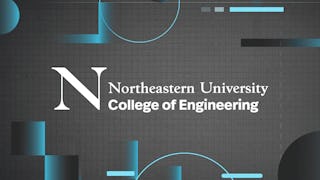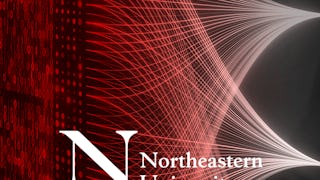Welcome to this course on applied natural language processing in engineering. This course is designed to provide you with an in-depth understanding of NLP, a pivotal area of artificial intelligence that empowers computers to comprehend, interpret, and generate human language. Throughout this course, you will explore a wide range of topics, from fundamental NLP tasks like text classification and Named Entity Recognition (NER) to advanced techniques in neural machine translation and optimization methods critical for machine learning. We will delve into the complexities of teaching language to machines, addressing challenges like ambiguity, grammar, and cultural nuances. By the end of this part 1 course, you will have a foundational understanding of how modern NLP systems work - particularly those involving machine learning and deep learning. These topics will equip you to build, analyze and improve NLP systems across many applications.



Skills you'll gain
Details to know

Add to your LinkedIn profile
October 2025
22 assignments
See how employees at top companies are mastering in-demand skills

There are 7 modules in this course
This module provides an in-depth exploration of Natural Language Processing (NLP), a crucial area of artificial intelligence that enables computers to understand, interpret, and generate human language. By combining computational linguistics with machine learning, NLP is applied in various technologies, from chatbots and sentiment analysis to machine translation and speech recognition. The module introduces fundamental NLP tasks such as text classification, Named Entity Recognition (NER), and neural machine translation, showcasing how these applications shape real-world interactions with AI. Additionally, it highlights the complexities of teaching language to machines, including handling ambiguity, grammar, and cultural nuances. Through the course, you will gain hands-on experience and knowledge about key techniques like word representation and distributional semantics, preparing them to solve language-related challenges in modern AI systems.
What's included
4 videos19 readings2 assignments1 app item
This module focuses on optimization techniques critical for machine learning, particularly in natural language processing (NLP) tasks. It introduces Gradient Descent (GD), a fundamental algorithm used to minimize cost functions by iteratively adjusting model parameters. You’ll explore variants like Stochastic Gradient Descent (SGD) and Mini-Batch Gradient Descent to learn more about their efficiency in handling large datasets. Advanced methods such as Momentum and Adam are covered to give you insight on how to enhance convergence speed by smoothing updates and adapting learning rates. The module also covers second-order techniques like Newton’s Method and Quasi-Newton methods (e.g., BFGS), which leverage curvature information for more direct optimization, although they come with higher computational costs. Overall, this module emphasizes balancing efficiency, accuracy, and computational feasibility in optimizing machine learning models.
What's included
2 videos16 readings3 assignments
This module explores Named Entity Recognition (NER), a core task in Natural Language Processing (NLP) that identifies and classifies entities like people, locations, and organizations in text. We’ll begin by examining how logistic regression can be used to model NER as a binary classification problem, though this approach faces limitations with complexity and context capture. We’ll then transition to more advanced techniques, such as neural networks, which excel at handling the complex patterns and large-scale data that traditional models struggle with. Neural networks' ability to learn hierarchical features makes them ideal for NER tasks, as they can capture contextual information more effectively than simpler models. Throughout the module, we compare these methods and highlight how deep learning approaches such as Recurrent Neural Networks (RNNs) and transformers like BERT improve NER accuracy and scalability.
What's included
2 videos14 readings3 assignments1 app item
The Word2Vec and GloVe models are popular word embedding techniques in Natural Language Processing (NLP), each offering unique advantages. Word2Vec, developed by Google, operates via two key models: Continuous Bag of Words (CBOW) and Skip-gram, focusing on predicting a word based on its context or vice versa (Word2Vec). The GloVe model, on the other hand, created by Stanford, combines count-based and predictive approaches by leveraging word co-occurrence matrices to learn word vectors (GloVe). Both models represent words in a high-dimensional vector space and capture semantic relationships. Word2Vec focuses on local contexts, learning efficiently from large datasets, while GloVe emphasizes global word co-occurrence patterns across the entire corpus, revealing deeper word associations. These embeddings enable tasks like analogy-solving, semantic similarity, and other linguistic computations, making them central to modern NLP applications.
What's included
3 videos29 readings4 assignments1 app item
This module delves into the evaluation techniques for Natural Language Processing (NLP) models, focusing on both intrinsic and extrinsic evaluation methods. Intrinsic evaluation assesses the model's performance based on internal criteria, such as word embedding quality, parsing accuracy, and language model perplexity. In contrast, extrinsic evaluation measures the model's effectiveness in real-world applications, including tasks like machine translation, sentiment analysis, and named entity recognition. You’ll also learn more about key differences between these evaluation types, and the importance of context and application in determining a model's utility. Additionally, you’ll review specific metrics like cross-entropy loss, perplexity, BLEU, and ROUGE scores, providing a comprehensive understanding of how to evaluate and improve NLP models.
What's included
9 readings2 assignments1 app item
This module explores various techniques for topic modeling in natural language processing (NLP), focusing on methods like Latent Semantic Analysis (LSA), Non-Negative Matrix Factorization (NMF), and Latent Dirichlet Allocation (LDA). It begins with an introduction to matrix factorization and the importance of transforming textual data into numerical representations. You’ll delve into the mechanics of LSA and NMF, paying attention to their use of TF-IDF and Singular Value Decomposition (SVD) to uncover latent semantic structures. Additionally, you’ll review LDA's probabilistic approach to topic modeling, explaining its reliance on Dirichlet distributions and Bayesian inference to identify hidden topics within a corpus. Through detailed examples and mathematical explanations, the module provides a comprehensive understanding of how these techniques can be applied to extract meaningful topics from large text datasets.
What's included
1 video16 readings4 assignments1 app item
This module delves into the essential techniques of syntactic and semantic parsing in natural language processing (NLP). You’ll begin with an exploration of linguistic structures, focusing on phrase structure and dependency structure, which are fundamental for understanding sentence syntax. Then you’ll review various parsing methods, including transition-based and graph-based dependency parsing, highlighting their respective advantages and challenges. Additionally, you’ll touch on neural transition-based parsing, which leverages neural networks for improved accuracy and efficiency. Finally, the module touches on semantic parsing, emphasizing its role in mapping sentences to formal representations of meaning, crucial for applications like dialogue systems and information extraction.
What's included
2 videos32 readings4 assignments
Instructor

Offered by
Explore more from Machine Learning
 Status: Preview
Status: PreviewNortheastern University
 Status: Preview
Status: PreviewNortheastern University
 Status: Free Trial
Status: Free Trial Status: Free Trial
Status: Free Trial
Why people choose Coursera for their career





Open new doors with Coursera Plus
Unlimited access to 10,000+ world-class courses, hands-on projects, and job-ready certificate programs - all included in your subscription
Advance your career with an online degree
Earn a degree from world-class universities - 100% online
Join over 3,400 global companies that choose Coursera for Business
Upskill your employees to excel in the digital economy
Frequently asked questions
To access the course materials, assignments and to earn a Certificate, you will need to purchase the Certificate experience when you enroll in a course. You can try a Free Trial instead, or apply for Financial Aid. The course may offer 'Full Course, No Certificate' instead. This option lets you see all course materials, submit required assessments, and get a final grade. This also means that you will not be able to purchase a Certificate experience.
When you purchase a Certificate you get access to all course materials, including graded assignments. Upon completing the course, your electronic Certificate will be added to your Accomplishments page - from there, you can print your Certificate or add it to your LinkedIn profile.
Yes. In select learning programs, you can apply for financial aid or a scholarship if you can’t afford the enrollment fee. If fin aid or scholarship is available for your learning program selection, you’ll find a link to apply on the description page.
More questions
Financial aid available,

